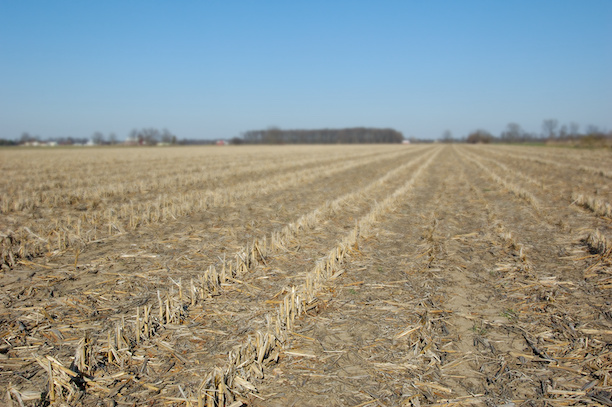Nutrients Leave with the Crop
Oct 11, 2023

Do you know how many nutrients are being pulled from your soil each year?
If you don’t know, said Mike Slater, Federated ag sales rep for Isanti and Osceola, you are “missing one piece of the puzzle for fertility recommendations.”
The combines are rolling and early reports on yields are “better than expected,” he said. And while it may not be a bumper crop this year, growers are not seeing the “devastating drought loss yields most were expecting,” said Slater.
As a result, more nutrients are being pulled from the soil than expected and it’s time to replenish the soil. You need a “build plan,” he said.
Consider this soybean data:
And then look at the corn numbers:
Slater noted that “with the corn and soybeans, the stover isn’t getting removed on most acres, so some of these numbers are a bit excessive when compared to what we’re applying,” but the nutrients still need to be available in the soil for the next crop. Only a soil test can verify the numbers and needs.
And then consider alfalfa:
Nutrient management plans for next year are based on this season’s yields (crop removal), yield goals, and soil test data. With that information, growers can ensure adequate nutrient replacement where needed, and prevent over application on fields that don’t require as much.
Slater added one important reminder: Nutrient availability is critical. “You can be applying everything you need for a bumper crop, but if the pH is out of line and nutrients are getting tied up, applying more won’t do you any good,” he said. It will be a waste of money.
Talk to your Federated Agronomist to help determine what your fields need and to outline nutrient management plans that may start with fall fertilizer applications.
If you don’t know, said Mike Slater, Federated ag sales rep for Isanti and Osceola, you are “missing one piece of the puzzle for fertility recommendations.”
The combines are rolling and early reports on yields are “better than expected,” he said. And while it may not be a bumper crop this year, growers are not seeing the “devastating drought loss yields most were expecting,” said Slater.
As a result, more nutrients are being pulled from the soil than expected and it’s time to replenish the soil. You need a “build plan,” he said.
Consider this soybean data:
- A 45 bu./ac. soybean crop will pull about 45 lbs. of phosphorus, 100 lbs. of potassium, and 16 lbs. of sulfur,
- A 65 bu./ac. crop will pull about 65 lbs. of phosphorus, 145 lbs. of potassium, and 25 lbs. of sulfur.
And then look at the corn numbers:
- A 150 bu./ac. corn crop will pull about 75 lbs. of phosphorus, 200 lbs. of potassium, and 25 lbs. of sulfur, and about 168 lbs. of nitrogen (some of which will come from mineralization in the soil; the U of MN maximum return to N value (MRTN) is a good source for calculating actual nitrogen recommendations).
- A 200 bu./ac. corn crop will remove about 100 lbs. of phosphorus, 270 lbs. of potassium, 30 lbs. of sulfur, and 224 lbs. of nitrogen.
Slater noted that “with the corn and soybeans, the stover isn’t getting removed on most acres, so some of these numbers are a bit excessive when compared to what we’re applying,” but the nutrients still need to be available in the soil for the next crop. Only a soil test can verify the numbers and needs.
And then consider alfalfa:
- A 5 ton/ac. alfalfa crop pulls about 60 lbs. of phosphorus, 245 lbs. of potassium, 27 lbs. of sulfur, and 95 lbs. of calcium. (Federated recommends Gypsum SO4™ as a great source of calcium.)
Nutrient management plans for next year are based on this season’s yields (crop removal), yield goals, and soil test data. With that information, growers can ensure adequate nutrient replacement where needed, and prevent over application on fields that don’t require as much.
Slater added one important reminder: Nutrient availability is critical. “You can be applying everything you need for a bumper crop, but if the pH is out of line and nutrients are getting tied up, applying more won’t do you any good,” he said. It will be a waste of money.
Talk to your Federated Agronomist to help determine what your fields need and to outline nutrient management plans that may start with fall fertilizer applications.